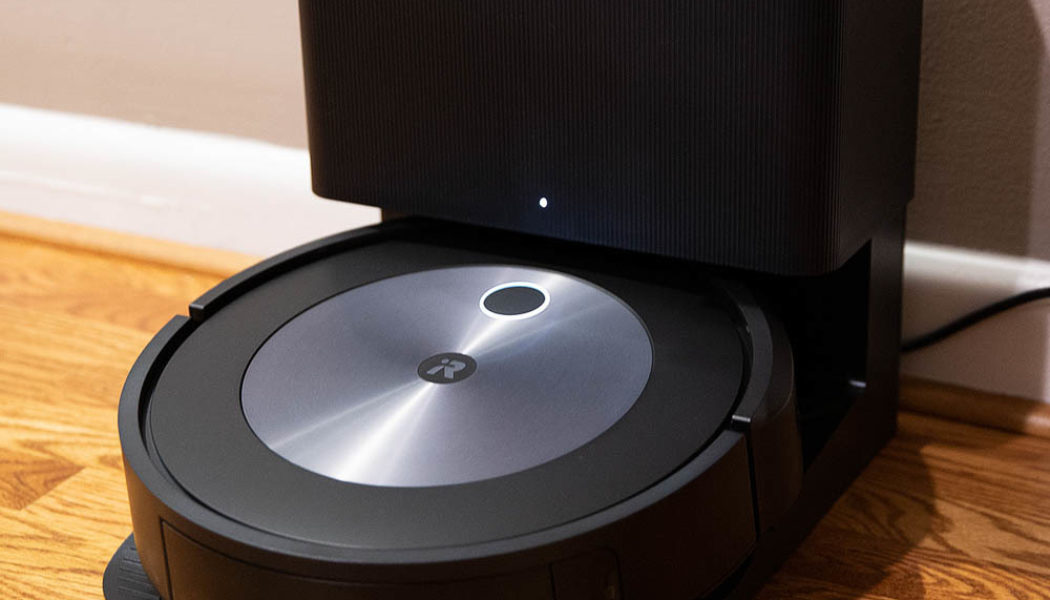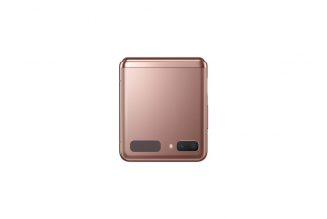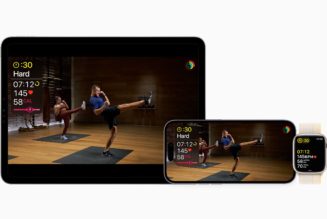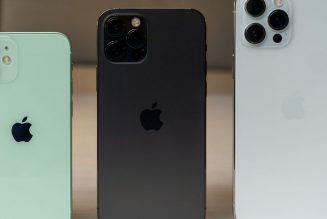Robot vacuums have come a long way since the days I used to babysit my original Roomba (circa 2006), following it around to make sure it didn’t thrash around on a threshold or ignore the miniature lighthouses and trundle unseeingly into a no-go zone. Back then, my biggest issue was coming home to a robot vacuum that had gone about 10 minutes into its cleanup route and been derailed by a shoe, sock, or dress-up wig.
Fast forward a decade or so, and robot vacuum manufacturers claim they’ve cracked it. Using improved sensors combined with artificial intelligence, the latest crop of bots can now see and recognize everyday household objects and nimbly navigate around them to carry on their merry way.
But is this feature worth splashing out on a top-of-the-line bot for? I put two of the newest to the test — iRobot’s Roomba j7 ($650 for the vacuum, $850 for the j7 Plus version with the auto-empty base) and Samsung’s Jet Bot AI Plus ($1,300 for the bot and base, you can’t buy it separately) — to see if they lived up to their lofty promises.
The main advantage of this flagship feature is you don’t have to tidy up before the robot runs. I’m not convinced this is as big a selling point as some other advances, like self-emptying or smart mapping. Floors can’t really be cleaned if they’re still littered with clutter. But if it means the bot won’t get tripped up by that stray cable you didn’t know was sitting under the couch or the pair of shoes your significant other carelessly discarded in its path, then there’s some benefit.
The other perk for pet owners is that one of those common household objects the bots will avoid is poop. Yep, if you have a pup who often poops in the living room, iRobot promises its newest vacuum won’t smear the crap all over the place thanks to iRobot’s PrecisionVision Navigation technology.
If it fails, then the iRobot Pet Owner Official Promise (P.O.O.P for short) kicks in, and they’ll send you a new one (only in the first year, though, and no word on who will come and clean up the catastrophe). It will also avoid phone cords, power cables, shoes, and socks, with more objects on their way.
Samsung’s Jet Bot AI Plus doesn’t come with the same promise, but its AI-powered 3D Object Recognition technology is backed by an Intel processor and is programmed to discern turds and other common clutter. Plus, you can have it check in on your dog throughout the day using the vacuum’s built-in HD camera.
:no_upscale()/cdn.vox-cdn.com/uploads/chorus_asset/file/23163834/vtuohy_220110_4963_0018.jpg)
As high-end robot vacuums, both models have all the features you’d expect: smart mapping to ensure every nook and cranny is reached, voice assistant compatibility so you can imperiously command your robot army of one (even say which room to head to), scheduling and location-based automations, strong cleaning performance, the ability to add virtual no-go zones (and physical ones if you prefer), and a self-emptying dock, so you rarely have to get your hands dirty.
Both robots have an upgrade to intelligent mapping that includes furniture and appliances. This is handy as it means you can tell the robot to go “clean in front of the fridge.” (The Roomba works with the Alexa and Google voice assistants and the Samsung with both of those plus Bixby).
The Jet Bot AI Plus can automatically identify appliances, adding them to the map in the app (which is the SmartThings app). You can edit and add if it gets it wrong (oddly, it never spotted my giant Samsung refrigerator). The Roomba lets you add Clean Zones into the map in its iRobot app and label them as “counter,” “dining room table,” or “couch” (the AI should suggest them over time, iRobot tells us, but that hadn’t happened in my six weeks of testing). The Roomba also lets you create multiple maps for other floors, the Jet Bot only has one map.
The Roomba has smart connections that can tell the robot to run when you leave, including the options to link it to the closing of your MyQ smart garage door controller or locking of your August lock. You can also use IFTTT or Alexa Routines to set up location-based prompts for the robot to get busy while you’re gone. Samsung offers this feature through SmartThings’ Automations. The app is a little challenging to navigate as it’s an entire smart home ecosystem, not just an app to run your robot, but it does include a wide variety of automation options.
Neither bot doubles as a mop, but Roomba has a mopping robot that can share maps with the vacuum and which you can program to pop out and mop after the vacuum is done. Samsung also has a robot mop, but there are no linked features yet. In my experience, stand-alone mop bots are better. Most robot vacs that also mop put most of their power into vacuuming, and the mopping portion is more about ineffectually dragging a wet towel over your floor.
:no_upscale()/cdn.vox-cdn.com/uploads/chorus_asset/file/23168877/Samsung_JetBot_App.jpg)
Samsung does have another trick up its sleeve to justify that eye-wateringly high price tag (it’s one of the most expensive robot vacuums you can buy). It doubles as a mobile security camera — think Ring’s Always Home Cam without the hazard of flying and with the bonus that you can actually buy it (we’re still waiting on that Ring drone).
Both robots have cameras built-in for navigation purposes, but with the Jet Bot AI Plus, you can use its onboard lens as a home monitoring device. Which is actually really fun, although of minimal use beyond tracking your pet (which it can also do — although only dogs, no kitties) or monitoring someone sneaking around your house. Because of its height, it’s limited in what it can see (so you can’t use it to check the stove is on), and there’s no zoom, plus it can’t do stairs. But you can schedule it to patrol on the hour (using the SmartThings app) and look for motion, as well as choose up to five “spots” on the robot’s map to go surveil.
A pet monitoring feature is a separate option using the free SmartThings Pet add-on in the app. This lets you set a schedule for the Jet Bot AI Plus to patrol around and look specifically for your pet. It will report back if it doesn’t find him or her. If it does see them, it pops up a notification and records a quick video. In my testing, this was pretty spotty. It only ever went into two rooms, stubbornly refusing to check out the living room, where the pet was sitting.
You can manually control the robot through the app to go find your furry bundle, all the while muttering the phrase, “I am not a helicopter pet parent. I am not a helicopter pet parent.” Live streaming and 10-second video clips are free, and you can upgrade to 60-second clips for $8 a month or $80 a year.
:no_upscale()/cdn.vox-cdn.com/uploads/chorus_asset/file/23163829/vtuohy_211029_4963_0013.jpg)
Both robots boast unique designs. The Samsung Jet Bot AI Plus was clearly inspired by a galaxy far, far away, and if you’ve always wanted a sleek-looking storm-trooper-like robot (vacuum) in your home, here it is. It’s also a beast — weighing about 10 pounds and measuring 5.5 inches at its tallest point (which is when the little LiDAR sensor pops up). This means it won’t get under that mid-century mod couch easily. However, its tank-like wheels will surmount nearly any obstacle (except perhaps rug tassels).
The Roomba is much more compact. At just 3.5 inches tall, it got under all my furniture with no issues. While the Jet Bot has a squared-off front end that tapers down as low as 2 inches, allowing it to get into places like along kitchen cabinets, the Roomba still has it beat on versatility.
The Roomba’s bin/dock is also much shorter and squatter than most (including the Samsung’s, which is taller and narrower). Not short enough to live under a couch or bed, but certainly less obtrusive (it also now holds an extra bag, which is helpful). Speaking of bags, you’ll need to replace them every two to three months and Roomba’s cost $20 for three, with Samsung’s being more expensive at $40 for a five-pack.
:no_upscale()/cdn.vox-cdn.com/uploads/chorus_asset/file/23163824/vtuohy_210921_4963_0009.jpg)
On-device controls vary, too — with the Samsung offering two buttons, one to start, stop and pause a run, and one to send it home. Plus, a glowing LED strip at the front gives you an indication of what it’s doing (it glows blue if it’s in patrol mode) and adds to that Star Wars vibe. The Samsung will also chatter away to you about its daily life almost incessantly. “Thank you for helping me” is one of its cutesiest phrases, but if it gets stuck or runs into a problem, it will keep talking until you rescue it. Not ideal if you like to run it at night. Thankfully, this feature can be turned off.
The Roomba has been stripped down to just one button that will start, stop and pause a clean with a tap or long-press to send it home. A spinning LED ring around the button also informs you what it’s doing — white for cleaning, red for low battery, and blue when it’s thinking about stuff.
Unfortunately, the powers-that-be have done away with the spot clean button. So you can’t just plop it down and press one button when your kid knocks the Cheerios box over. Neither robot has this feature, found on most other robot vacuums. Instead, you have to use the app to “spot clean” — which is fiddly at best.
Testing the Samsung Jet Bot AI Plus with fake dog poop.
Testing the Roomba j7 with fake dog poop.
But back to that signature feature. How well do these robots avoid the everyday detritus of life? Overall, excellently. Both navigated most obstacles I put in their path — from shoes to cables to socks and other cruft.
The main difference in my testing was how it avoided an object. Both bots reacted reliably about 90 percent of the time to things that could derail them. But the Samsung always got up close and personal with the item before moving on; the Roomba would get closer to some than others — seemingly having a better idea of exactly what it was approaching. (The Roomba also has a small, white LED light that turns on when it’s navigating to help it see objects. You can’t turn this light off.)
This was particularly true with dog poop. If poop was spotted it would do a rather dramatic about-turn or swift reversal and give the said excrement a decently wide berth. On the other hand, the Samsung would maneuver around it, trying to clean everywhere but the spot it sits on. This meant it got way too close and would probably take a small souvenir with it as it brushed up against it. (Our test poop was made from play putty, much less squishy than the real thing).
:no_upscale()/cdn.vox-cdn.com/uploads/chorus_asset/file/23168886/Roomba_J7_app.jpg)
The Roomba also impressed me over Samsung in terms of how it used its intelligence. They both take pictures of the objects it finds (yes, including poop) and but the Roomba gives you the option to automatically create a keep-out zone in the app, so it doesn’t go there again (which worked excellently for a lounge chair whose skinny legs repeatedly trip up every floor bot I’ve tested). Or, if it’s just a temporary problem, you can mark it as so. It will even go back after and clean just the places it missed — once you’ve tidied up.
The Samsung robot flags objects on the map, shows an image, and offers up a guess as to what it was (there are three recurring options — sock / towel, cup / plate, and electrical cord). But beyond that, it doesn’t do anything about it.
The one time in our testing that the Roomba failed the ultimate test.
However, when it came to the ultimate test — poop — in the repeated trials I put them through, the only robot that actually went over the fake poop was the Roomba. Granted, it only failed once out of about a dozen tests, but once is all it takes.
Both these bots delivered in terms of seamless, methodical navigation that covered the majority of the space while sucking up most of the debris from my hardwood floors. The Roomba edged the Samsung as its side brush meant it reached the dirt along the edges better (the Jet Bot doesn’t have a side brush, but its square shape lets it get closer to edges), and it is the more powerful, picking up some smaller debris the Samsung missed.
But the Roomba is a bruiser. Even with a new feature, “Sight Touch,” that supposedly more gently navigates and encounters obstacles than previous generation Roombas, the j7 took out a piece of (styrofoam) quarter-round trim from my baseboard. On the other hand, the Jet Bot is almost too cautious, not getting close enough to some objects to clean properly around them.
Each robot can suck harder when it goes over non-plush carpet (neither cope well with high-pile, a common issue with robot vacs). In testing, both performed well, with the Roomba edging the Samsung on dog hair, likely thanks to its two rubber brushes that oscillate in opposite directions, whereas the Samsung has just one large bristle brush.
:no_upscale()/cdn.vox-cdn.com/uploads/chorus_asset/file/23163822/vtuohy_210921_4963_0005.jpg)
The Roomba was also more reliable at navigating thresholds, just barreling over them immediately, whereas the Jet Bot AI Plus had to check them out for a minute or two, approaching and backing away before deciding it was safe to proceed. With its tank-like treads instead of wheels, however, it sailed right over.
Speaking of suction — this isn’t iRobot’s most powerful sucker; that award goes to the more expensive top dog in the lineup, the $1,099 Roomba s9 Plus (including the dock/bin). iRobot does not release suction power stats but says that the j7 is 10 times stronger than its entry-level Roomba 600, whereas the s9 is 40 times stronger. The j7 is just fine for regular dirt and debris, and even if you have more challenging tasks (copious kitty litter, for example), it’s hard to recommend the $250 upgrade to the s9, as you don’t get the obstacle navigation features. In my testing of the s9, it routinely fell prey to socks and charging cables.
:no_upscale()/cdn.vox-cdn.com/uploads/chorus_asset/file/23163827/vtuohy_211029_4963_0011.jpg)
Both vacuums are reasonably loud, and Roomba only has one setting (you can choose from three different “cleaning behaviors,” but they apparently all suck the same). Samsung has two suction levels, max and low — at the max level, both hit 73 decibels in my testing. And both sound like jet engines taking off when they empty their bins. The Jet Bot was the more reliable at emptying its bin, never once getting clogged, whereas I had to pull some clogs consisting of long fibers and hair out of the Roomba once or twice.
Where things diverge significantly is battery life — the Roomba can go an impressive 1 hour and 45 minutes on one charge, whereas the Jet Bot tops out at an hour on full power. Both will go back to the base, recharge, and resume, but the Jet Bot took almost twice as long to clean our entire downstairs living area as the Roomba because it had to recharge in the middle while the Roomba could do the whole space in one go.
My other gripe with the Samsung is that it gets easily confused. If you pick it up while it’s running a job, it resets and forgets what it’s doing. It also occasionally would just stop mid-job and say there was a problem with its LiDAR sensor and to turn it off and on again. That would fix it, but it did this often enough for it to be really irritating.
:no_upscale()/cdn.vox-cdn.com/uploads/chorus_asset/file/23163823/vtuohy_210921_4963_0007.jpg)
:no_upscale()/cdn.vox-cdn.com/uploads/chorus_asset/file/23163828/vtuohy_211029_4963_0012.jpg)
Ultimately, the object navigation alone is probably not worth the price premium here. It’s not going to kill you to just tidy up a bit, is it? If you care about the home / pet monitoring feature, the Samsung gets more attractive, but its cleaning prowess just isn’t as good as the Roomba’s.
There are other robots that offer home monitoring cameras (Ecovacs Deebot T8 AIVI has a built-in camera and costs almost $1,000 with a self-emptying dock), but the Samsung SmartThings smart home ecosystem gives the Jet Bot the edge. And it has more advanced pet monitoring features (it will even play music to your pet to keep them calm).
If you are looking for the best clean for your buck and really want to avoid the possibility that the robot won’t finish its run because of a stray piece of clutter, the Roomba j7 is the one to go with here. I also like how repairable Roombas are. While parts are expensive, they are available, and you can basically rebuild your bot if needed, making this investment one that should last a long time.
Personally, I’m looking forward to the day that robot vacs sprout arms and actually remove the crap before they clean. And it may not be that far off. Samsung already has arm-wielding bots for the kitchen, and Colin Angle, CEO of iRobot, tells me, “The home understanding and object recognition that today helps a Roomba do its job better will be the foundation for the next class of home robots that may, one day, have arms.”









